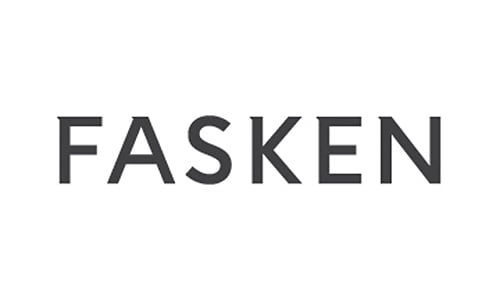The relationships between Canada’s Indigenous communities and its governments and industries require reconciliation to move forward together for our mutual benefit. In the last year and a half, the narrative has begun to shift from how to overcome Indigenous resistance to infrastructure projects to how to include these communities as partners. In order to advance these reconciliation efforts, Canada’s federal, provincial and territorial governments have announced an increase in funding for Indigenous communities and businesses through a number of initiatives and projects. We asked Amy Carruthers of Fasken to share her insights into the use of infrastructure as a tool for rebuilding relations with Canada’s Indigenous peoples.
What is the current relationship between government funding for Indigenous communities and its budgetary commitments to infrastructure spending? How will the 2021 federal budget adjust the present state of affairs?
If the federal government is able to deploy all the funding committed to infrastructure projects benefitting Indigenous communities or involving Indigenous participation, we should expect to see significant growth in these areas and opportunities for Indigenous communities and businesses, as well as for industry sponsors or partners that are successful collaborators. The recent announcement of Canada Infrastructure Bank’s $1 billion commitment to funding under the Indigenous Community Infrastructure Initiative (ICII) as part of the $10 billion Growth Plan to help address the significant infrastructure gap in Indigenous communities will facilitate investment in five prioritized sectors (green infrastructure, clean power, public transit, trade and transportation and broadband infrastructure).
How much control will Indigenous communities have over the direction and targets of the spending? Which sectors stand to benefit the most from this infrastructure investment and why?
The sectors in the five prioritized areas of the Growth Plan (green infrastructure, clean power, public transit, trade and transportation and broadband infrastructure) stand to benefit the most from these investments, which will favour revenue generating projects. While the ICII permits third party industry sponsor investment as well as Indigenous community capital, it is expected that Indigenous communities will have a significant amount of participation in and control over these projects. However, the amount of control that Indigenous communities have over which projects are selected for participation remains to be seen. Indigenous communities will also continue to have a role in directing spending on resource development projects where they are able to exert significant influence over which projects successfully navigate permitting and approval processes in their traditional territories.
What are the mechanisms or bodies that will be used to facilitate the transfer of funds from government to Indigenous groups, and why has the government decided to use these particular entities/processes?
The current commitments will be delivered by Canada Infrastructure Bank through the ICII component of the Growth Plan. This program will provide funding in the form of long-term low-cost debt financing to eligible projects. The projects must be revenue generating (but may also be supported by other community revenue) and provide a service and direct benefit to Indigenous communities in one of the five prioritized categories. Fund transfers may also come from Crown corporations seeking to reach agreements with Indigenous communities to undertake activities requiring Crown consultation or accommodation.
How have the provinces and territories approached the issue of sustainable development through investment and cooperation with Indigenous groups? Has the federal government’s approach influenced their strategies?
Some provinces like British Columbia and Alberta have been leading the way in their efforts to facilitate cooperation with and participation of Indigenous groups in infrastructure and resource projects through passing of legislation like the Declaration on the Rights of Indigenous Peoples Act in BC (a similar version of which has now been enacted federally) and the creation of the Alberta Indigenous Opportunities Corporation in Alberta (providing up to $1 billion in loan guarantees to enable access to capital for Indigenous communities to invest in natural resource projects). Others will have been positively influenced by the federal government’s approach to support Indigenous participation in infrastructure projects including equity and other participation arrangements. While all provinces and territories have programs and initiatives, there is quite a bit of variation in the eligibility requirements and the mechanisms used to facilitate the investments or funding.
How have recent infrastructure disputes between First Nations communities and the federal and provincial governments (such as the TransMountain pipeline) influenced the government’s strategy? What are the lessons that can be learned from these events going forward?
Recent decisions from the Supreme Court of Canada, policy developments including the enactment of the United Nations Declaration on the Rights of Indigenous Peoples Act, and experience on high profile projects have all influenced the government’s and industry’s strategies for reaching agreements with Indigenous communities where infrastructure and resource development projects are concerned. It is now widely accepted that it is preferable, if not necessary, to reach an agreement with the affected Indigenous communities, and the nature of agreements reached continue to evolve. Collaboration among Indigenous communities can also be a significant factor contributing to the success of such projects.
What do you believe will be the legal and socio-economic effects of this cooperative approach between the federal government and Canada’s Indigenous peoples over infrastructure? What will be its short- and long-term impact?
Closing the infrastructure gap affecting Indigenous communities and improving their financial resources and capacity are necessary steps towards reconciliation with our Indigenous peoples. These are all positive steps in that direction. In the short term, it may be more difficult for both governments and industry partners to reach agreement on certain projects as Indigenous communities demand more control over projects or other arrangements as a condition of providing their consent; however, in the long term the successful projects will be those that have been able to achieve a meaningful collaboration among the Indigenous communities, applicable government and industry sponsors (if applicable) that are mutually beneficial to and respectful of all participants.
Read this article to understand indigenous people, their rights and Canada's recognition of indigenous law.
Do you have any other insights on helping clients navigate the nexus of Indigenous and infrastructure legal concerns post/during COVID?
It is important to be respectful of ongoing COVID impacts and protocols, where applicable. Post-COVID we can expect the significant focus on investment in infrastructure projects and the associated opportunities to place community resources and capacity in high demand. If clients are able to help communities mitigate those demands by providing funding or longer lead times for review that will likely be appreciated, so that these opportunities can be realized for the benefit of Indigenous communities.
***
 Amy Carruthers is a corporate/commercial Partner in the Vancouver office with a solid background as a transaction lawyer and extensive experience in the energy industry. She is a member of the firm’s Global Energy Group and Indigenous Law Group. Amy drafts and negotiates complex commercial contracts regarding the purchase and sale of energy, investments in and other transactions involving resource projects, as well as relationships with Indigenous communities to foster reconciliation and facilitate project development.
Amy Carruthers is a corporate/commercial Partner in the Vancouver office with a solid background as a transaction lawyer and extensive experience in the energy industry. She is a member of the firm’s Global Energy Group and Indigenous Law Group. Amy drafts and negotiates complex commercial contracts regarding the purchase and sale of energy, investments in and other transactions involving resource projects, as well as relationships with Indigenous communities to foster reconciliation and facilitate project development.
Her experience includes: the development, construction and financing of generation and transmission facilities and related infrastructure; the purchase and sale of existing projects and facilities; and the creation of companies, partnerships, joint ventures, and other contractual arrangements among project investors, participants and other stakeholders.
Amy has also advised on the development of consultation and accommodation plans and negotiation of consultation, funding and impact benefit agreements with First Nations and other Aboriginal groups; the purchase and sale of structured energy products including renewable energy credits and other green attributes; and compliance with Canadian derivatives regulations relating to energy transactions.
Some of the clients Amy works with include BC Hydro, Powerex, Vancouver Airport Authority, Leagold Mining Corporation, Prince Rupert Gas Transmission, and Coastal GasLink Pipeline.
Prior to joining Fasken in 2014, Amy worked with a regional firm in Vancouver for many years and then took a short break from private practice to work in-house with a client, where she gained invaluable experience from the client perspective. She now has almost 20 years of experience as a corporate/commercial solicitor.





